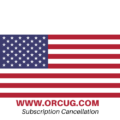How to Choose the Perfect Formal Dress for Prom or a Special Event

Understanding the Dress Code for Formal Events
When attending a formal event, it is essential to adhere to the dress code to ensure that you make the right impression. The dress code for formal events can vary depending on the occasion, such as weddings, galas, or black-tie affairs. To avoid any fashion faux-pas, it is crucial to familiarize yourself with the different dress codes and understand what each one entails.
Black Tie
Cocktail Attire
Formal Business Attire
Understanding the dress code for formal events is essential in order to create the right look. By adhering to the guidelines for each dress code, you can ensure that you are appropriately dressed for the occasion. Whether it is a black-tie event, cocktail attire, or a formal business gathering, dressing in the proper attire will not only make you feel more confident but also show respect for the event and its attendees. So, the next time you receive an invitation to a formal event, take the time to understand the dress code and select your outfit accordingly.
Identifying the Most Flattering Silhouette for Your Body Type
The key to looking and feeling your best in any outfit is to find the most flattering silhouette for your body type. With so many different body shapes and sizes, it can sometimes be a challenge to know exactly what styles will enhance your natural curves and angles. However, by understanding your body type and identifying the right silhouette, you can effortlessly highlight your best features and create a stunning look.
One of the first steps in identifying the most flattering silhouette for your body type is to determine your body shape. There are several common body shapes, including hourglass, pear, apple, and rectangle. Each shape has its own unique set of features and proportions, which will help guide your clothing choices.
Hourglass: This body shape is characterized by a well-defined waist and proportional hips and shoulders. The most flattering silhouettes for the hourglass shape are fitted styles that emphasize the waistline, such as wrap dresses and tailored jackets.
Pear: Pear-shaped bodies typically have narrower shoulders and wider hips. To balance out your proportions and create a flattering silhouette, opt for A-line dresses and skirts that accentuate your waist while skimming over the hips.
Apple: Apple-shaped bodies often carry weight around the midsection with slimmer arms and legs. Empire waistlines and flowy tops can help draw attention away from the tummy area, while dresses with a slight A-line shape can create a more balanced look.
Rectangle: The rectangle body shape is characterized by a straight waist and balanced proportions. To add curves and create a more defined silhouette, consider wearing peplum tops, pencil skirts, and dresses with ruching or draping.
Once you have determined your body shape, it’s important to consider the proportion and scale of your features. If you have a shorter torso, for example, you may want to avoid high-waisted styles that can make your proportions appear off-balance. Similarly, if you have a longer torso, high-waisted bottoms can help create the illusion of longer legs.
Additionally, don’t be afraid to experiment with different necklines and sleeve lengths to find what flatters your body type. V-necklines can elongate the neck and draw attention upwards, while cap sleeves can add width to narrow shoulders.
In conclusion, identifying the most flattering silhouette for your body type is crucial in creating a polished and stylish look. By understanding your body shape, proportions, and features, you can confidently select clothing styles that enhance your natural beauty and make you feel like the best version of yourself.
Considering the Appropriate Length for the Occasion
When it comes to choosing the perfect dress for a formal occasion, one of the important factors to consider is the appropriate length for the event. The length of your dress can greatly impact your overall look and the level of formality you portray. It is crucial to choose a length that is suitable for the occasion and reflects your personal style. Here are some key points to consider when selecting the appropriate length for your formal dress:
1.
Understand the dress code for the occasion you are attending. Different events may have specific requirements for dress length. For instance, a black tie event typically calls for floor-length gowns, while a cocktail party may allow for shorter, knee-length dresses. By knowing the dress code, you can ensure your dress length aligns with the event’s formality.
2.
Think about the type of event you will be attending. Is it a wedding, a gala, or a business function? Different occasions have different expectations for dress length. For upscale events, longer lengths such as ankle or floor-length dresses are generally more appropriate. For semi-formal events, tea-length or knee-length dresses can work well. Consider the nature of the event to determine the most fitting dress length.
3.
Take your own body proportions into consideration when choosing the length of your dress. Certain lengths may flatter your figure more than others. For example, if you have long legs, you may opt for a shorter hemline to show them off. Conversely, if you have shorter legs, a longer dress can create the illusion of length. Experiment with different lengths to find the one that accentuates your body type in the most flattering way.
Selecting the Right Color and Fabric to Suit Your Skin Tone
When it comes to selecting the right color and fabric for your formal dress, one important factor to consider is your skin tone. Different colors and fabrics can either enhance or detract from your natural complexion, so it’s essential to choose ones that complement your skin tone. Here are some tips to help you find the perfect match:
1. Identify Your Skin Undertone: Before you start shopping for a formal dress, determine whether your skin undertone is warm, cool, or neutral. Warm undertones typically have yellow or golden hues, while cool undertones have more pink or blue undertones. Neutral undertones have a balance of both warm and cool tones.
2. Colors for Warm Undertones: If you have warm undertones, opt for colors that have golden or earthy tones. Shades like mustard yellow, coral, peach, rich browns, and warm reds can complement your complexion beautifully. Avoid colors that are too icy or pastel, as they can make your skin appear dull.
3. Colors for Cool Undertones: For those with cool undertones, choose colors that have blue or purple undertones. Shades like icy blues, lavender, emerald green, magenta, and deep jewel tones can bring out the best in your complexion. Steer clear of overly warm or orangey colors, as they can clash with your skin tone.
4. Colors for Neutral Undertones: If you have a neutral undertone, consider yourself lucky! You can wear a wide range of colors, both warm and cool. Experiment with different shades to find the ones that make you feel confident and radiant. Don’t be afraid to try bold colors or subtle pastels.
5. Fabric Selection: In addition to choosing the right color, the fabric of your formal dress can also affect how it complements your skin tone. Opt for fabrics that have a subtle sheen or texture to add dimension to your look. Silk, satin, chiffon, and velvet can be excellent choices. Avoid fabrics that are too shiny or reflective, as they may overpower your complexion.
By selecting the right color and fabric to suit your skin tone, you can ensure that your formal dress enhances your natural beauty and leaves you feeling confident and elegant. Remember to always trust your instincts and choose colors that make you feel comfortable and fabulous!
Accessorizing Your Formal Dress for a Complete Look
When attending a formal event, it is not just the dress itself that can make or break your overall look. The right accessories can elevate your outfit and give you a complete, polished appearance. Whether you are attending a black-tie gala or a wedding, accessorizing your formal dress is essential to creating a cohesive and stylish ensemble.
One of the key aspects to consider when accessorizing your formal dress is the type of jewelry you choose. The right accessories can add a touch of glamour and elegance to your outfit. If you are wearing a strapless or low-neckline dress, a statement necklace can draw attention to your neckline and add a focal point to your ensemble. Alternatively, if your dress has intricate details or embellishments, opting for simpler, understated jewelry can prevent a cluttered look.
In addition to jewelry, the right handbag can also be a valuable accessory to complete your formal look. When choosing a handbag, consider the size and style that best complements your dress. A small clutch or clutch-style purse is often a popular choice for formal events, as it adds a touch of sophistication without detracting from your outfit. Choose a color that either matches or complements your dress for a cohesive look.
Lastly, don’t forget about your shoes when accessorizing your formal dress. While comfort is important, the right pair of shoes can also add style and elegance to your overall look. If you are wearing a long formal dress, opt for heels that have a similar color or metallic tone to create a cohesive look. For shorter dresses or cocktail attire, consider more playful or statement shoes to add a touch of personality to your outfit. Ensure that your shoes are comfortable enough to wear throughout the event so that you can confidently walk and dance the night away.
Frequently Asked Questions
What should I wear to a formal event?
Understanding the Dress Code for Formal Events
How can I determine the best dress silhouette for my body type?
Identifying the Most Flattering Silhouette for Your Body Type
How do I know what length of dress is appropriate for a specific occasion?
Considering the Appropriate Length for the Occasion
What factors should I consider when choosing colors and fabrics for a formal dress?
Selecting the Right Color and Fabric to Suit Your Skin Tone
What are some tips for accessorizing a formal dress?
Accessorizing Your Formal Dress for a Complete Look
What type of shoes should I wear with a formal dress?
Choosing the Right Shoes for a Formal Event
How should I style my hair and makeup when wearing a formal dress?
Tips for Properly Styling Your Hair and Makeup with a Formal Dress



